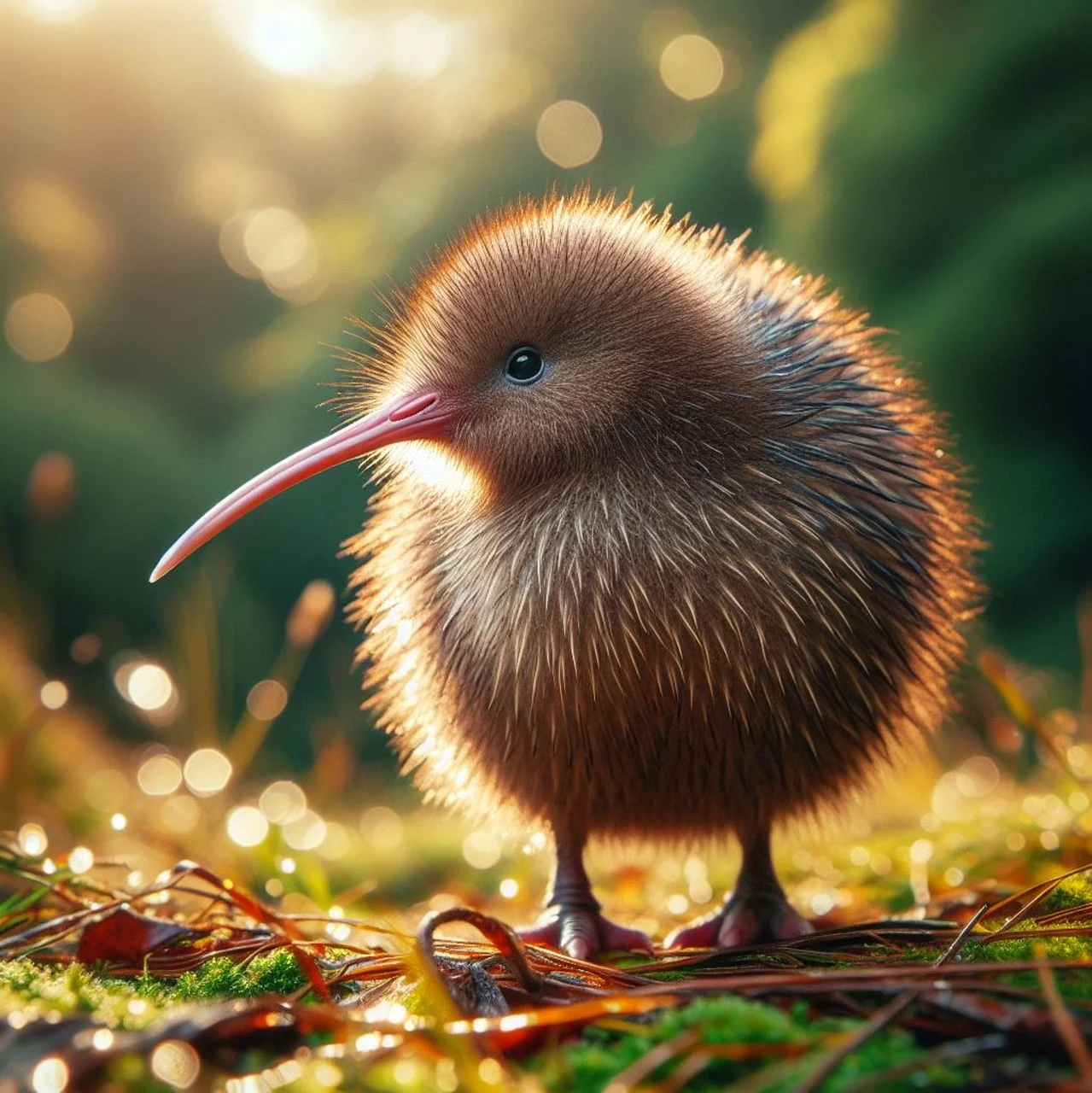The kiwi bird is one of our planet’s most fascinating and unique creatures. Known for its distinctive appearance and behaviors, this flightless bird is native to New Zealand and holds a special place in the hearts of many. In this article, we’ll delve deep into the world of the kiwi bird, exploring its characteristics, habitat, behavior, and conservation efforts. So, let’s embark on this exciting journey to learn more about this remarkable bird!
A Closer Look at the Kiwi Bird
The kiwi bird is unlike any other bird in the world. Here are some of the key features that make it so unique:
- Size and Appearance: Kiwis are about the size of a domestic chicken, typically standing around 18 inches tall. They have a round body covered in shaggy, brownish-grey feathers, which help them blend into their surroundings. Their most distinctive feature is their long, slender bill, up to 10 centimeters long.
- Wings and Flight: Unlike most birds, Kiwis cannot fly. Their wings are small and unsuitable for flight. Instead, Kiwis are excellent runners and can move quickly on the ground.
- Eyesight: Kiwis have poor eyesight and rely heavily on their sense of smell to find food. Their nostrils are located at the end of their long bill, allowing them to sniff out insects and worms in the ground.
Types of Kiwi Birds
There are five recognized species of kiwi bird, each with its unique traits:
- North Island Kiwi: The most widespread species, found mainly in forests and scrublands.
- South Island Kiwi: Slightly more extensive than its North Island counterpart, this species is adapted to various habitats.
- Little Spotted Kiwi: The smallest species was once nearly extinct but has recovered due to conservation efforts.
- Great Spotted Kiwi: This species is found in the South Island’s mountainous regions and has a distinct, mottled plumage.
- Okarito Kiwi: A rare species found only in the Okarito area of the South Island, known for its unique vocalizations.
Each species has adapted to its environment, showcasing the diversity within the kiwi bird family.
Habitat and Distribution
The kiwi bird is endemic to New Zealand, meaning it’s not found naturally anywhere else in the world. They inhabit a variety of environments, including:
- Forests: Many kiwis live in dense forests where they can hide from predators and find food.
- Grasslands: Open fields and grasslands provide ample foraging opportunities.
- Wetlands: Some species, like the Okarito kiwi, prefer wetland areas, which are rich in insects and other food sources.
Despite their adaptability, the kiwi’s habitat is increasingly threatened by human activity, including deforestation and urbanization.
Behavior and Lifestyle
Kiwis are known for their unique behaviors that set them apart from other birds:
- Nocturnal Nature: Kiwis are primarily nocturnal, meaning they are most active at night. This behavior helps them avoid daytime predators.
- Foraging Skills: Kiwis use their long beaks to probe the ground for insects, worms, and other invertebrates. They can even dig into the soil to reach food sources.
- Territoriality: Kiwis are territorial animals, often marking their territory with distinctive calls. Males and females communicate through a series of whistles and grunts.
- Breeding Habits: Kiwis are monogamous and usually mate for life. During the breeding season, females lay one large egg, which both parents incubate. The egg can weigh as much as a quarter of the female’s body weight!
Diet of the Kiwi Bird
The kiwi bird has a varied diet that consists mainly of:
- Insects: Kiwis love to munch on beetles, worms, and grubs, which they find by probing the ground.
- Fruits: They also eat fruits, especially native berries, which provide essential nutrients.
- Seeds: Seeds are another essential part of their diet, helping to sustain them during the harsher seasons.
Kiwis have a unique digestive system that allows them to extract nutrients efficiently from their food.
The Kiwi Bird’s Role in New Zealand Culture
The kiwi bird is not just an iconic animal in New Zealand; it’s also a significant cultural symbol. Here’s why:
- National Symbol: Kiwis are considered a national symbol of New Zealand. “Kiwi” often refers to New Zealanders themselves, reflecting the bird’s importance to national identity.
- Cultural Significance: Māori, the indigenous people of New Zealand, regard the kiwi as a taonga (treasure). The bird is featured in numerous stories, songs, and artwork, highlighting its importance in Māori culture.
- Tourism Attraction: Many visitors to New Zealand are eager to see kiwis in their natural habitat. Wildlife parks and reserves offer opportunities to observe these unique birds, further enhancing their status as a cultural icon.
Conservation Status of the Kiwi Bird
The kiwi bird faces numerous threats that have led to a decline in its population. Here are some of the main challenges:
- Predation: Introduced species such as rats, stoats, and cats pose significant threats to kiwi populations. These predators often target kiwi eggs and chicks, which are particularly vulnerable.
- Habitat Loss: Deforestation and land development have reduced Kiwis’ natural habitats, making it more difficult for them to find food and shelter.
- Human Impact: As urban areas expand, kiwis are increasingly at risk from road traffic and other human-related activities.
Fortunately, conservation efforts are underway to protect the kiwi bird and its habitat. These efforts include:
- Predator Control: Programs to control invasive species are helping to reduce predation on kiwis.
- Habitat Restoration: Conservationists are working to restore and protect natural habitats for kiwis, ensuring they have the space and resources they need to thrive.
- Breeding Programs: Captive breeding programs aim to boost kiwi populations and reintroduce birds into the wild.
Fascinating Facts About the Kiwi Bird
Here are some fun and exciting facts about the kiwi bird that you may not know:
- Unique Eggs: Kiwi eggs are among the largest of any bird relative to the mother’s size. This adaptation provides the chick with ample nutrients before hatching.
- Long Lifespan: Kiwis can live for over 25 years in the wild, and some individuals have been known to live even longer in captivity.
- Strong Sense of Smell: Kiwis have a highly developed sense of smell, which is unusual for birds. They can detect food buried underground, making them excellent foragers.
- Endearing Calls: Kiwis are known for their unique calls, which vary among species. The calls can range from high-pitched whistles to deep grunts.
Conclusion
The kiwi bird is a truly remarkable creature that symbolizes the unique biodiversity of New Zealand. Its distinctive features, fascinating behaviors, and cultural significance make it essential to the nation’s identity. However, its challenges due to predation and habitat loss highlight the urgent need for conservation efforts. By protecting this iconic bird and its habitat, we can ensure that future generations will have the opportunity to admire and learn from the extraordinary kiwi bird. So, the next time you think of New Zealand, remember the kiwi and its vital role in the country’s natural and cultural heritage!




